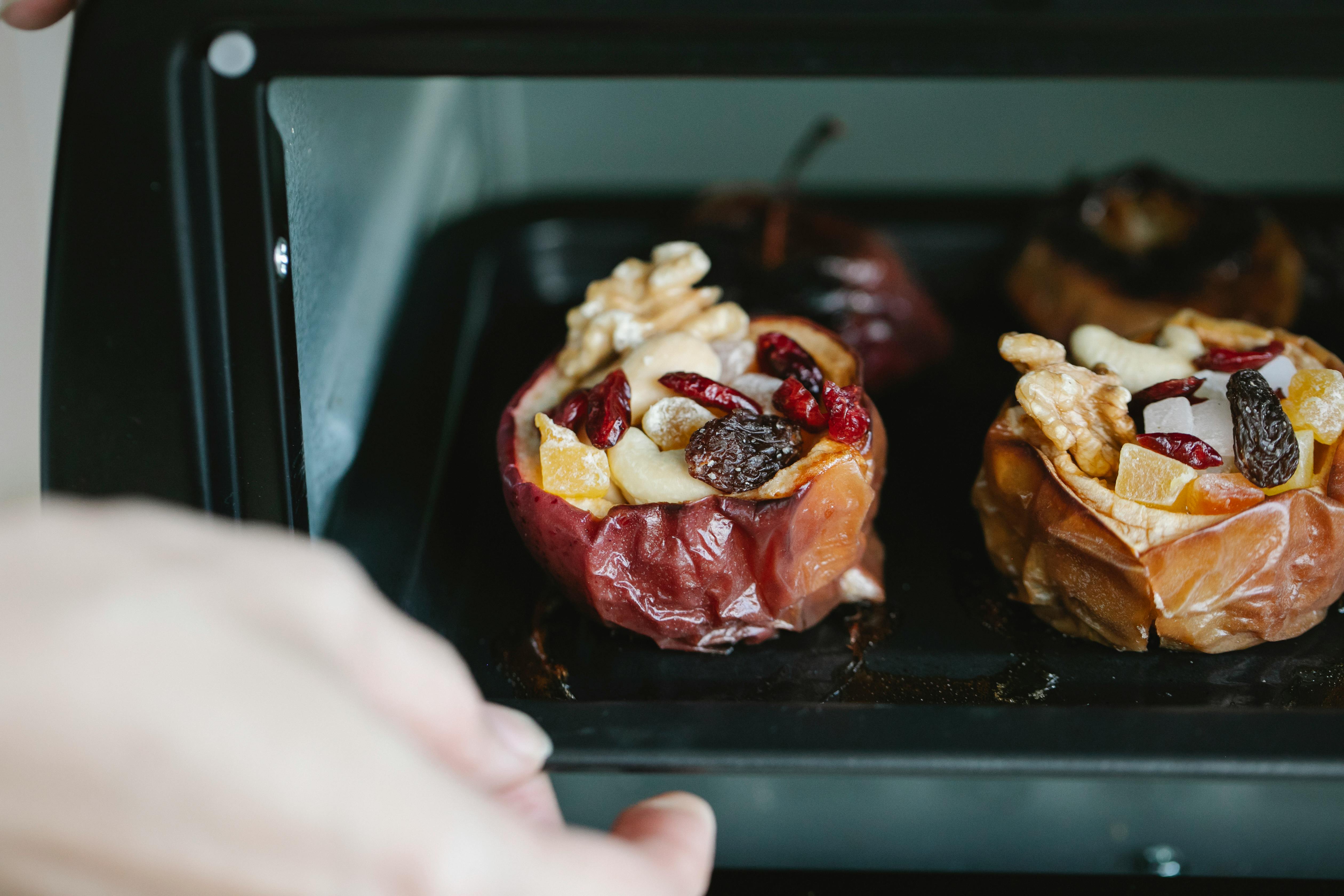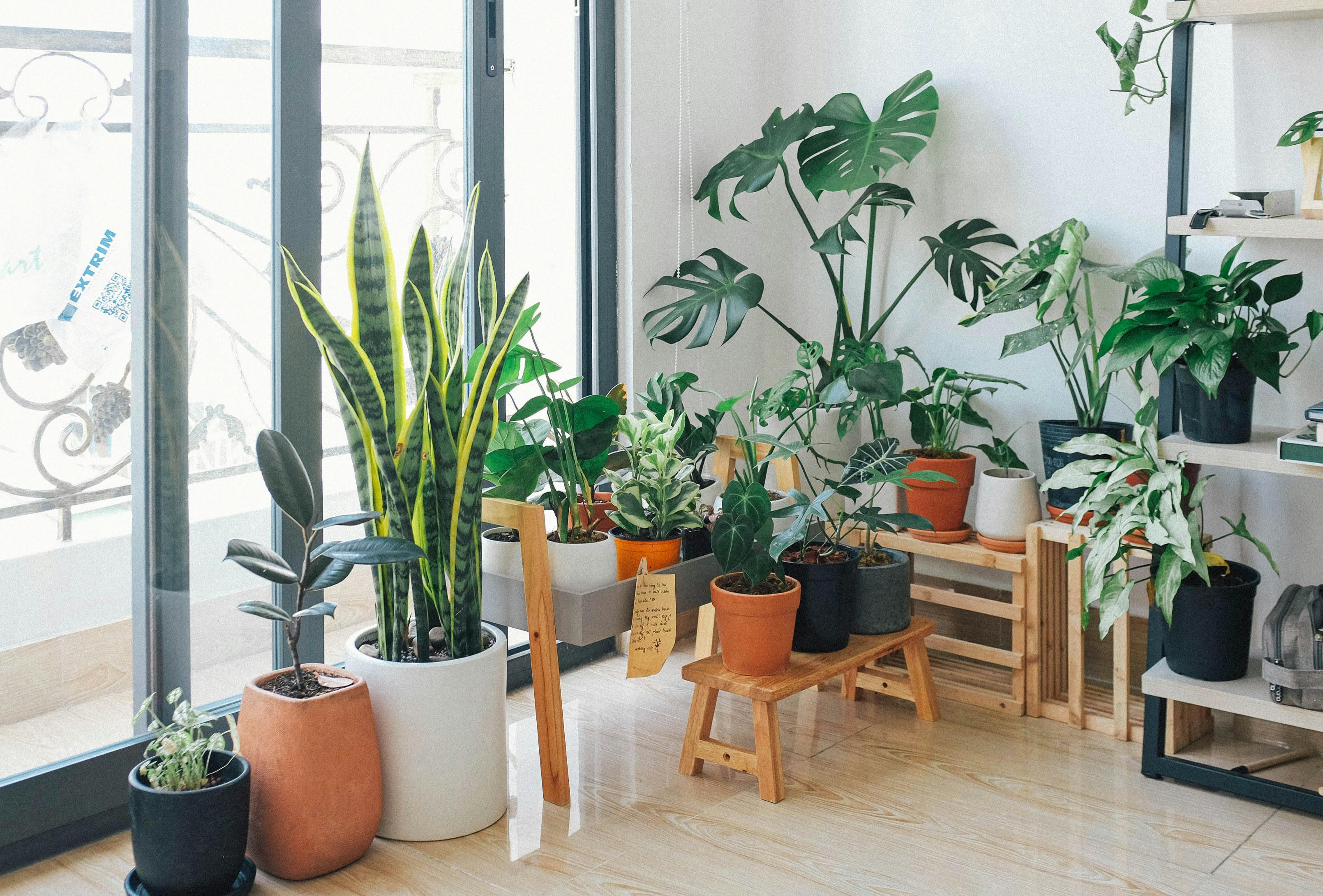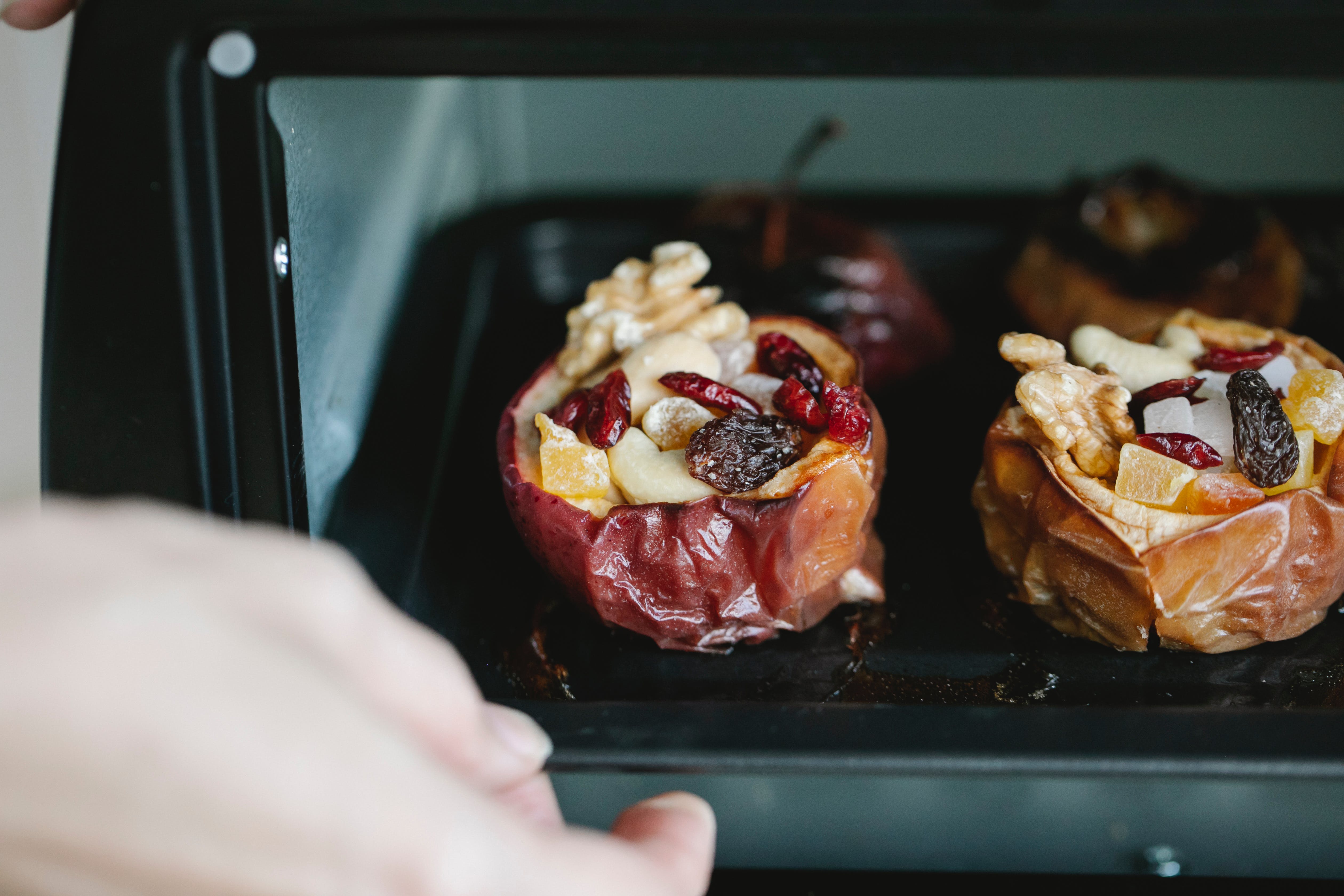Growing a monstera indoors is a great way to add some greenery to your home. Although it’s difficult to get monstera to fruit indoors, it’s not impossible. With the right conditions and care, you can have fruit-bearing monstera plants growing in the comfort of your own home. In this guide, you’ll learn how to get monstera to fruit indoors so that you can enjoy the sweet and delicious fruits of your labor.In order to get a Monstera to fruit indoors, it is important to provide the plant with a warm, humid environment. Give the plant plenty of bright, indirect light and maintain a temperature between 65°F and 80°F. Make sure the soil is kept moist but not overly wet and fertilize it every two weeks with a balanced liquid fertilizer. Monsteras also need to be pollinated in order for them to produce fruit, so you will need to manually pollinate the flowers using either a paintbrush or cotton swab. Finally, prune away any dead or damaged leaves and stems in order to promote healthy growth and encourage flowering and fruiting.
Setting Up The Right Environment For Monstera Fruiting
Creating the right environment for Monstera fruiting is essential for helping the plant reach its full potential. With proper care and attention, you can ensure that your Monstera will produce plenty of delicious fruit. It’s important to understand the environmental needs of your plant so that you can create an optimal growing space.
The first step in setting up the right environment for Monstera fruiting is to provide plenty of light. Your plant should have access to direct sunlight for at least six hours each day, preferably during the morning or late afternoon when the sun is less intense. If you don’t have access to natural sunlight, you can use artificial lighting such as grow lights or LED lights.
Next, you need to make sure that your plant has a proper temperature range. Monsteras prefer a temperature range between 65-85°F (18-29°C). If possible, try to keep your plant away from drafty windows or air conditioning vents as these can cause sudden drops in temperature which can be detrimental to your plants growth and fruiting potential.
Finally, you need to make sure that your Monstera has access to adequate humidity levels. The ideal humidity level for this plant is between 40-50%. You can use a humidifier or misting system if necessary, or simply place a water dish near the base of your plant and keep it filled with water.
By following these tips and creating an environment that meets all of your plants needs, you can ensure that it will reach its full potential and produce plenty of delicious fruit!
Choosing The Right Potting Mix
When it comes to growing plants in containers, choosing the right potting mix is essential. Potting mix is a specially formulated soil-less mixture of ingredients designed to provide plants with the best growing environment. It helps retain moisture, provides good drainage and aeration, and contains nutrients that will help plants thrive. It is important to choose a potting mix that is appropriate for the type of plant you are growing.
The most common types of potting mixes are peat-based, coir-based, and soilless mixes. Peat-based mixes are made from partially decomposed organic matter such as sphagnum moss or peat moss and are best for moisture-loving plants like ferns and African violets. Coir-based mixes contain coconut fibers, bark chips, and other organic matter that provide good drainage and aeration for plants that prefer drier conditions. Soilless mixes are composed of various inorganic materials such as perlite or vermiculite. They are lightweight, sterile, and free of weed seeds or disease organisms.
When choosing a potting mix, look for one that is labeled “premium” or “professional” and has been tested for pH balance. The pH level should be slightly acidic (6.5–7) for most plants; some acid-loving plants may require a lower pH level (5–6). If you’re unsure what type of potting mix is best for your plant, consult your local garden center or nursery professional for advice on which product would be most suitable.
In addition to choosing the right type of potting mix, you should also pay attention to how much fertilizer it contains. Most commercial brands come pre-fertilized with slow release fertilizers that can last up to six months; however, if you plan on fertilizing your plants more frequently then opt for an unfertilized variety that can be mixed with liquid fertilizer as needed.
Remember that not all potting mixes are created equal; therefore it’s important to take time to read labels carefully before purchasing any product so you know exactly what you’re getting and how it will affect your plants’ growth. Taking the time to choose the right potting mix will ensure optimal growth conditions and help your plants thrive!
Ensuring Adequate Humidity Levels
Humidity is one of the most important factors in maintaining a comfortable environment and it plays a major role in how we feel. Ensuring adequate humidity levels can be essential to making sure that our homes and other places are comfortable. To ensure proper humidity levels, it is important to understand what humidity is, how it affects us, and what measures can be taken to ensure proper levels.
Humidity is simply the amount of water vapor present in the air. When the air is saturated with water vapor, it is said to be at 100% relative humidity. This means that any additional water vapor added would cause condensation or even rain. Relative humidity levels below 60% will typically feel a bit dry while levels above 70% may create an uncomfortable feeling due to the excessive moisture in the air.
Humidity affects us in a variety of ways. Low humidity can cause dry skin, irritated eyes, sore throats, and difficulty breathing for those with allergies or asthma. High humidity can lead to condensation on windows and surfaces which can cause mold growth and other problems in the home or office environment.
To ensure adequate humidity levels, there are several measures that can be taken. Utilizing a humidifier or dehumidifier can help maintain comfortable relative humidity levels within a space depending on the desired level needed for comfort. Additionally, proper ventilation should be used so that excess moisture can escape from a space quickly and efficiently. Finally, monitoring devices such as hygrometers should be used regularly to make sure your space stays within an acceptable range of relative humidity at all times.
In conclusion, ensuring adequate humidity levels is essential for creating a comfortable environment both indoors and outdoors. Understanding what relative humidity is and how it affects us helps us take the necessary steps needed to ensure proper levels are maintained at all times so we can enjoy optimal comfort wherever we may be!
Providing Enough Light To The Plant
It is essential for plants to receive enough light in order to survive and thrive. Without the right amount of light, plants will become weak, their growth stunted, and the leaves may begin to yellow or wilt. Plants need both direct sunlight and diffused light from the surrounding environment in order to survive. Direct sunlight provides the plant with energy for photosynthesis, while diffused light helps the plant absorb more light than it can get from direct sunlight alone.
When choosing a spot for a plant, it is important to consider how much light it will receive. Sun-loving plants should be placed in an area that gets at least 6 hours of direct sunlight each day. Shade-loving plants should be placed in areas where they receive partial sun or indirect light throughout the day. If you aren’t sure how much light a plant needs, you can always consult a local garden center or nursery for advice on what kind of lighting is best for your particular plant species.
In some cases, providing enough light to a plant may require artificial lighting sources such as grow lights. Grow lights are specifically designed to provide an adequate amount of light for photosynthesis and can be used in areas where natural sunlight is not available or inadequate. When using grow lights, it is important to ensure that they are placed far enough away from the plant so that it does not get burned by too much heat or bright light. Additionally, it is important to make sure that grow lights are turned off at night so that the plant can rest and recover from photosynthesis during its dark period.
By making sure that your plants are receiving enough light each day you can help them stay healthy and happy. Knowing how much light your specific plants need and providing it will help ensure their success in your garden!

Watering Requirements For Monstera Fruits Indoors
Monstera fruits indoors require regular watering to keep them healthy and productive. The frequency of watering depends on the size and type of plant, as well as the local climate. Overwatering can lead to root rot, so it is important to ensure the soil is not too wet or too dry.
When watering, use lukewarm water and make sure to check the soil’s moisture level before adding any more water. If the top few inches of soil are dry, then it is time to water again. Allow the water to penetrate deep into the soil and avoid wetting the leaves or stems of your plant.
It is also important to remember that Monstera fruits indoors need good air circulation in order to stay healthy. Make sure you are not overcrowding your plants or blocking any air flow with other objects in your home. Doing so will prevent mold from forming on your plants and help them stay vigorous and productive all year round.
Finally, you should fertilize your Monstera fruits regularly with a liquid fertilizer that is specifically designed for indoor plants. This will help them grow faster and produce more fruit. Be sure to follow the directions on the package for best results!
Pruning and Training For Monstera Fruit Production Indoors
Pruning and training are important for achieving maximum fruiting potential from Monstera plants indoors. Pruning helps reduce the number of leaves on a plant, making it easier to manage and maintain, while training shapes the plant so it can be grown in the desired space. Proper pruning and training techniques can also help increase flower production and yield larger fruits.
When pruning a Monstera, it is important to start at the base of the stem. This will help keep the plant healthy and structurally sound. Begin by removing any dead or damaged leaves or branches, then move up to the main stem, removing any shoots that are growing too close together or too far apart. Once this is done, you can begin to shape the plant by pruning away any excess foliage that is blocking light from reaching lower parts of the stem or interfering with airflow.
Training your Monstera is also essential for optimal fruit production indoors. A good technique is to use string or wire to gently guide branches into a desired shape as they grow. It’s important not to tie them too tightly so that they don’t become damaged over time. Be sure to check on them regularly and make adjustments as needed so that they remain secure and in place.
Finally, don’t forget proper fertilization when trying to encourage fruit production indoors. Feed your Monstera regularly with a balanced fertilizer designed for indoor plants, such as one with an NPK ratio of 10-10-10 or something similar. This will help ensure your plant has all of the necessary nutrients it needs for healthy growth and maximum fruiting potential.
With proper pruning and training techniques as well as regular fertilization, you can achieve great results when growing Monstera indoors for fruit production!
Fertilizing Requirements For Monstera Fruit Production Indoors
Fertilizing requirements for monstera fruit production indoors are important to ensure a healthy plant and bountiful fruit crop. Monstera plants need a balanced fertilizer that is high in nitrogen, phosphorus, and potassium. A good fertilizer for monstera should have an NPK ratio of about 5-10-5 or 10-10-10. It is also important to use a slow-release fertilizer that can provide the nutrients over time as the plant grows. Additionally, it is important to fertilize during the growing season, usually from spring to fall, as this will help promote healthy growth and flowering.
When using a fertilizer for monstera fruit production indoors, it is important to follow the directions on the package and not exceed the recommended amounts. Too much fertilizer can be harmful to the plant and can lead to nutrient burn or stunted growth. Additionally, it is important to water regularly when fertilizing monsteras as this helps the nutrients reach the roots of the plant. Furthermore, it is advised to only fertilize when the soil is dry as wet soil makes it difficult for the nutrients to be absorbed by the roots.
Overall, proper fertilization plays an important role in ensuring a successful monstera fruit production indoors. With proper fertilization and care, monsteras can produce large amounts of sweet fruits that are sure to delight!

Conclusion
Fruiting a Monstera indoors can be a challenge, but with patience and the right care, it is certainly possible. To get your Monstera to fruit, make sure you provide plenty of bright, indirect light and keep your plant in a warm area away from drafts. Additionally, you should fertilize regularly with a balanced fertilizer and keep the soil moist but not soggy. Finally, it is important to prune your plant regularly to encourage new growth and increase air circulation. With these steps in mind, you are well on your way to harvesting sweet Monstera fruits!
Good luck on your journey to fruiting your Monstera indoors!



